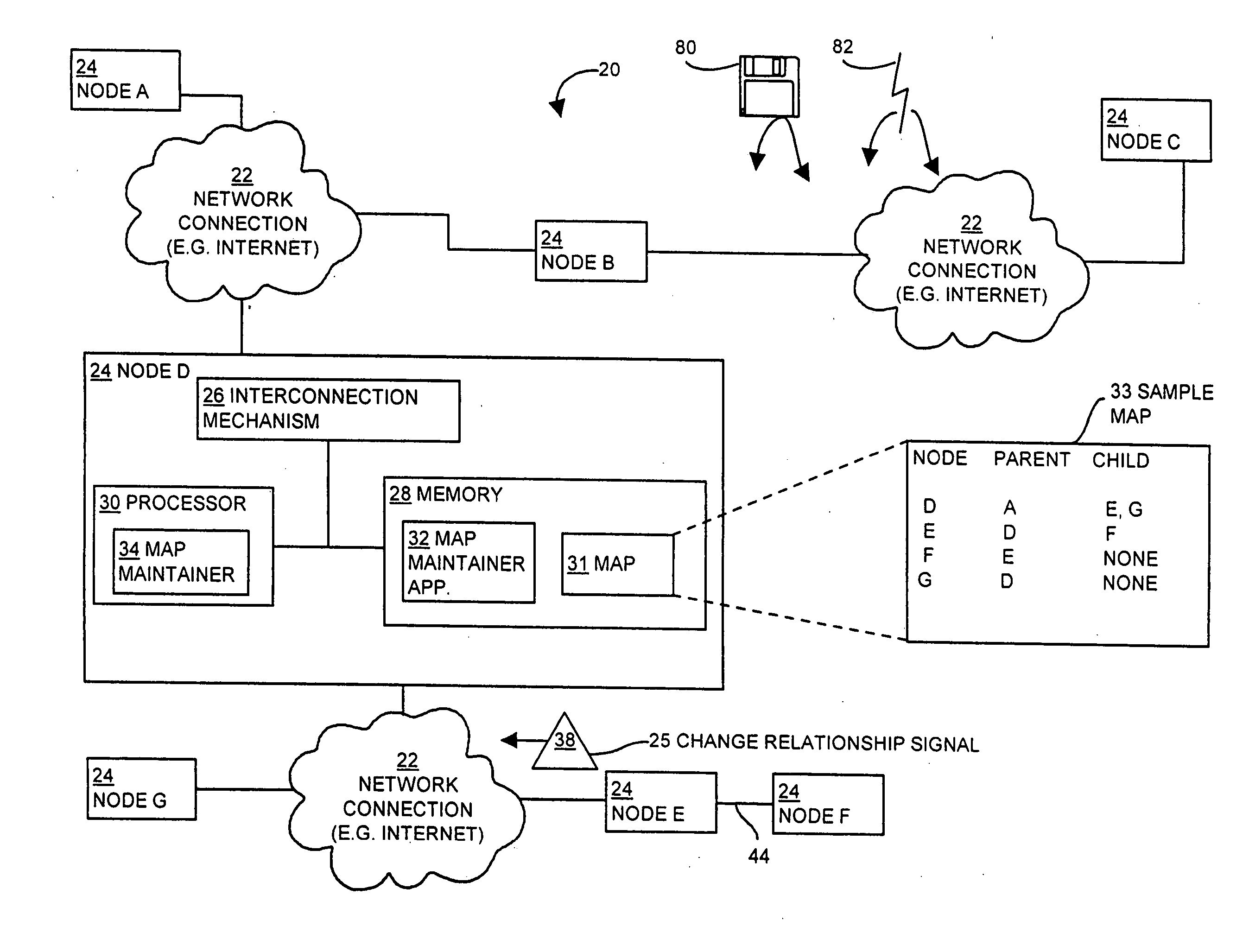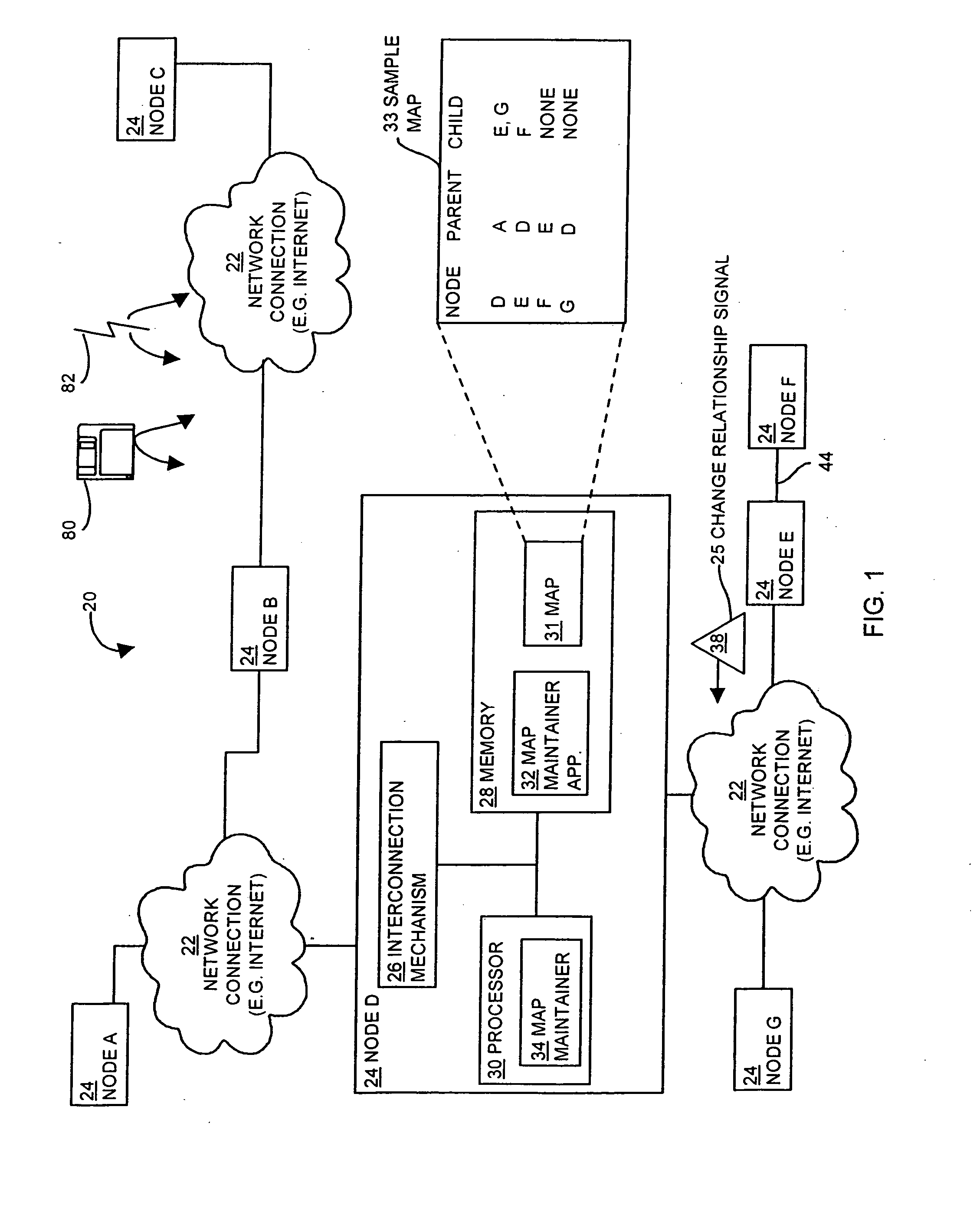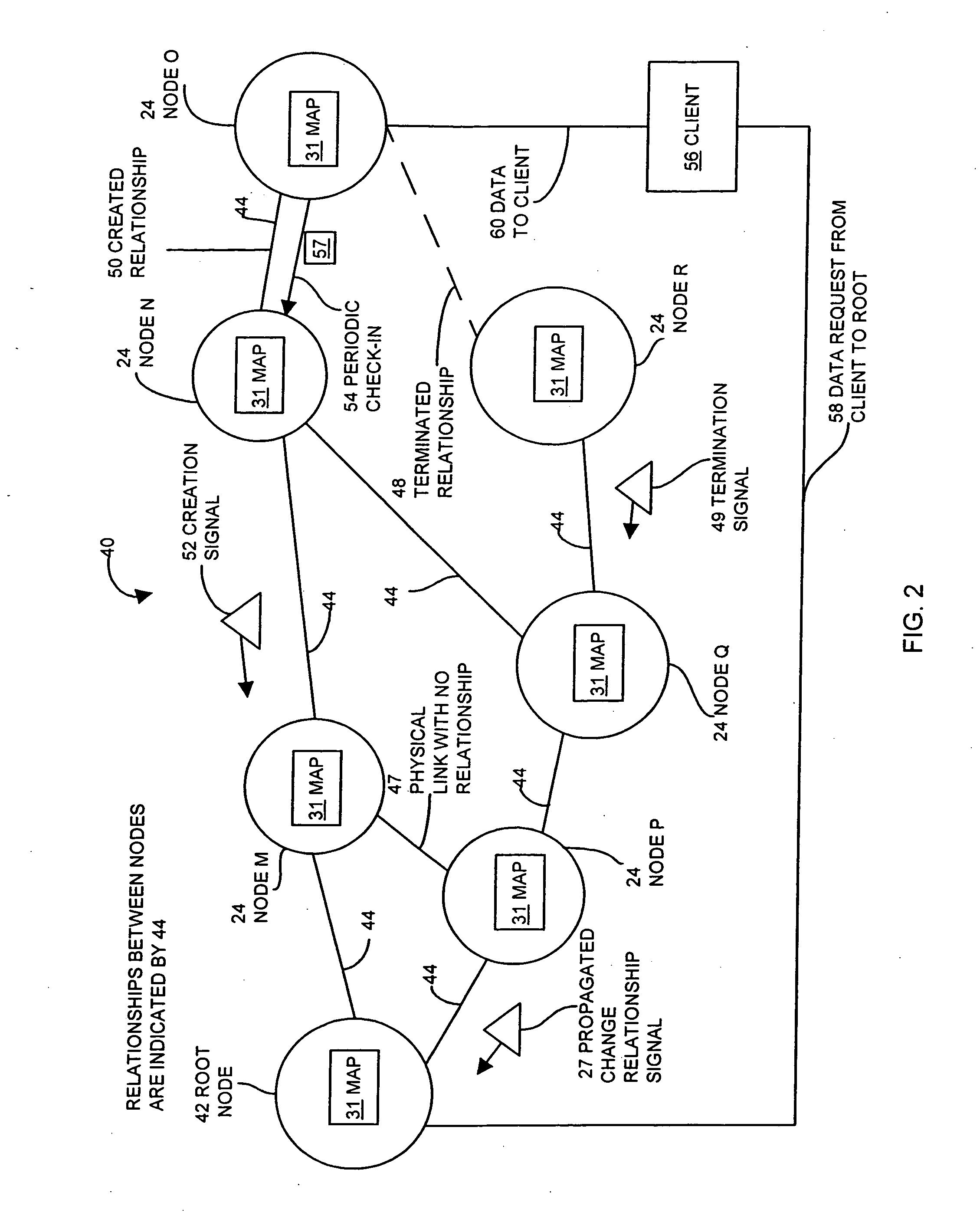Methods and apparatus for maintaining a map of node relationships for a network
a network and node technology, applied in the field of network node relationships maintenance methods and apparatus, can solve the problems of network administration nodes being burdened by repeated communications, /or the status information regarding other nodes becoming out of date,
- Summary
- Abstract
- Description
- Claims
- Application Information
AI Technical Summary
Benefits of technology
Problems solved by technology
Method used
Image
Examples
Embodiment Construction
[0045] The invention is directed to techniques for maintaining a map of relationships among nodes in a network (or graph), in which the nodes are computers or network devices in a network of physical connections or logical relationships overlaying the physical connections of the network. Each node monitors or otherwise detects changes in relationships among lower level nodes (e.g., one or more child nodes in a node tree). The node may receive a signal indicating that the relationship has changed (e.g., a change relationship signal). The change may be a creation of a new relationship, such as when a child attaches itself to a new parent, or a termination of a relationship, such as when a child ends a relationship with the previous parent. A map maintainer in each node maintains a map of node relationships for nodes (e.g., nodes below the node in a node tree) and updates the map when the node receives information on a change in relationships among the nodes. If the node receives appar...
PUM
 Login to View More
Login to View More Abstract
Description
Claims
Application Information
 Login to View More
Login to View More - R&D
- Intellectual Property
- Life Sciences
- Materials
- Tech Scout
- Unparalleled Data Quality
- Higher Quality Content
- 60% Fewer Hallucinations
Browse by: Latest US Patents, China's latest patents, Technical Efficacy Thesaurus, Application Domain, Technology Topic, Popular Technical Reports.
© 2025 PatSnap. All rights reserved.Legal|Privacy policy|Modern Slavery Act Transparency Statement|Sitemap|About US| Contact US: help@patsnap.com



